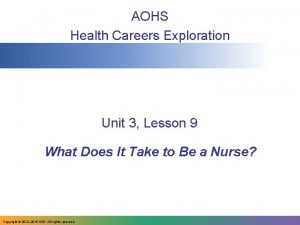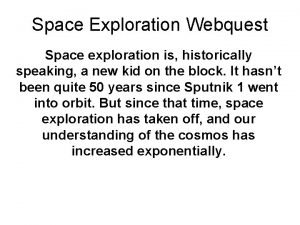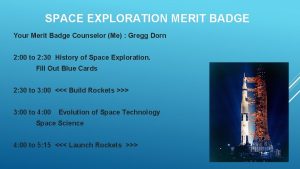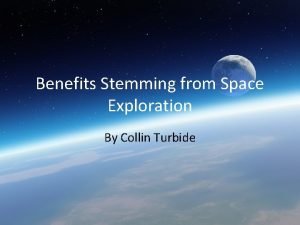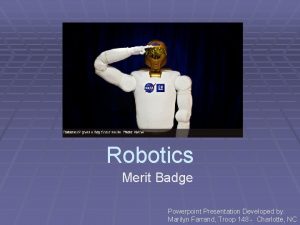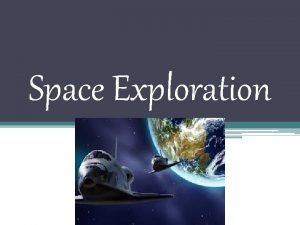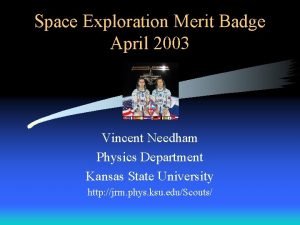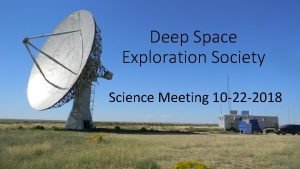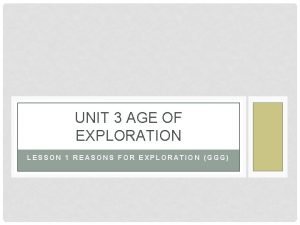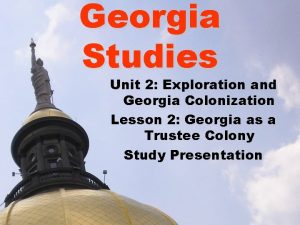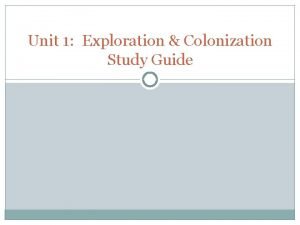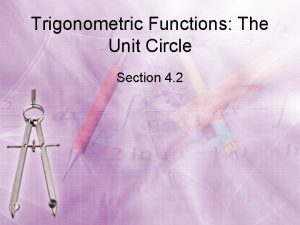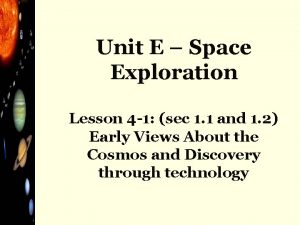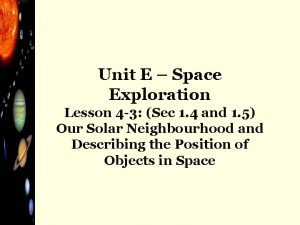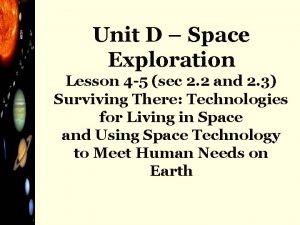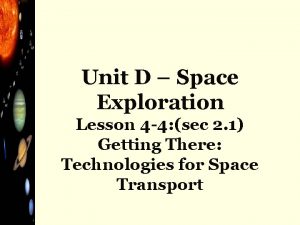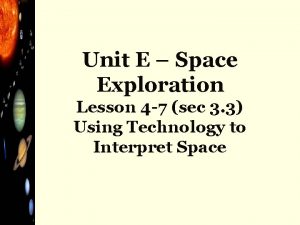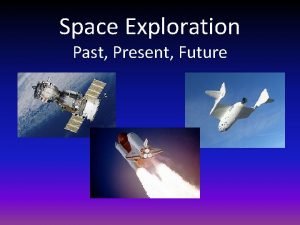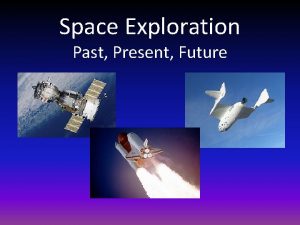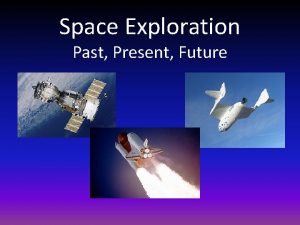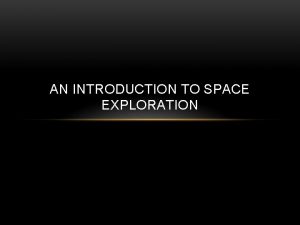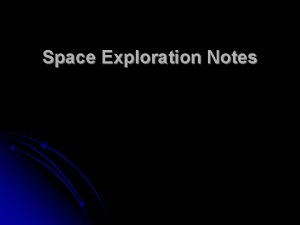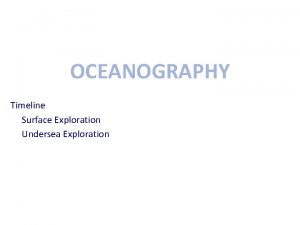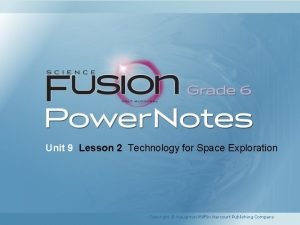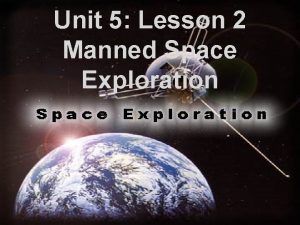Unit E Space Exploration Lesson 4 5 Sec















- Slides: 15

Unit E – Space Exploration Lesson 4 -5: (Sec 3. 1 and 3. 2) Using Technology to See the Visible and Using Technology to See Beyond the Visible

A. Optical Telescopes «light is collected and focused into an image « refracting telescopes use 2 lenses to form an image… maximum diameter of about 1 m slide 1 of 5

« reflecting telescopes use 1 lens and several mirrors to form an image. . . larger (6 m) slide 2 of 5

« segmented mirrors can be used to make one large telescope with enormous light-gathering ability and resolving power slide 3 of 5

B. Combining Telescopes «interferometry is a technique where 2 or more telescopes are used together to improve resolution eg) Keck I and Keck II at Mauna Kea Very Large Telescope (VLT) in Chile slide 4 of 5

C. Hubble Space Telescope « light and air pollution limits the resolution of telescopes on Earth «the Hubble Space Telescope is a reflectin g telescope that orbits at an altitude of 600 km slide 5 of 5

3. 2 Using Technology to See Beyond the Visible

A. Electromagnetic Spectrum « optical telescopes give us information based on visible light «many objects in space emit radio waves, X-rays, infrared (heat) rays, gamma rays etc « electromagnetic energy is energy that travels at the speed of light slide 1 of 7

«electromagnetic energy has different wavelengths and frequencies «wavelength is the distance from one point on a wave to the same point on the next wave «frequency is the number of waves passing a single point per second «different forms of electromagnetic energy form the electromagnetic spectrum slide 2 of 7

slide 3 of 7

B. Radio Telescopes «used to study radio waves emitted by objects in space «radio waves are not affected by weather, pollution or the atmosphere «can be used to study the distribution of matter in space slide 4 of 7

«must be very large (300 m diameter) since radio waves have a long wavelength slide 5 of 7

C. Radio Interferometry «combine multiple radio telescopes to get greater resolution «can be arranged in large groups called arrays to increase accuracy of measurements «can be used to see planets orbiting distant stars slide 6 of 7

D. Space Probes «not all questions can be answered by Earthbased telescopes «space probes are unmanned satellites and “landers” that put equipment on or close to other planets slide 7 of 7

Assignment n Worksheet 7
 Unit 3 career exploration lesson 9 health science
Unit 3 career exploration lesson 9 health science Space exploration webquest
Space exploration webquest Space exploration merit badge
Space exploration merit badge Space exploration conclusion
Space exploration conclusion The father of modern rocketry
The father of modern rocketry Military robots ppt
Military robots ppt Http://history.nasa.gov/sputnik/
Http://history.nasa.gov/sputnik/ Space exploration merit badge
Space exploration merit badge Deep space exploration society
Deep space exploration society The age of exploration lesson 1
The age of exploration lesson 1 Unit 2: exploration and georgia colonization
Unit 2: exploration and georgia colonization Unit 1 careers
Unit 1 careers Unit 1 exploration and colonization
Unit 1 exploration and colonization Sec unit circle
Sec unit circle Right triangle trigonometry
Right triangle trigonometry Unit 10, unit 10 review tests, unit 10 general test
Unit 10, unit 10 review tests, unit 10 general test
